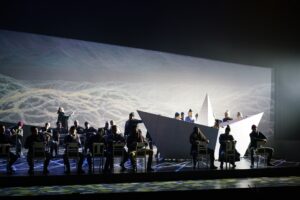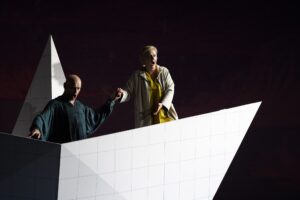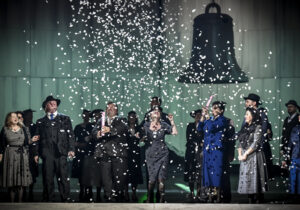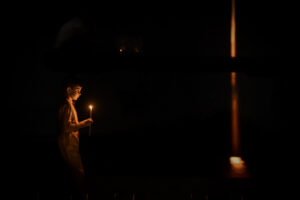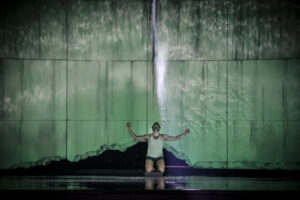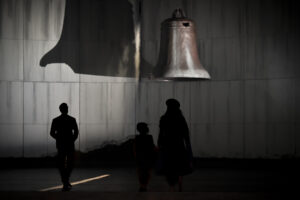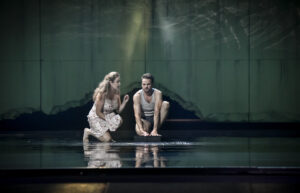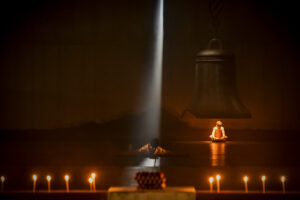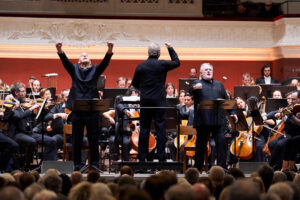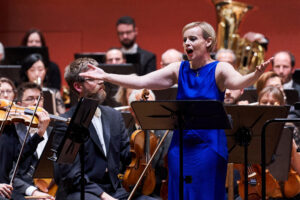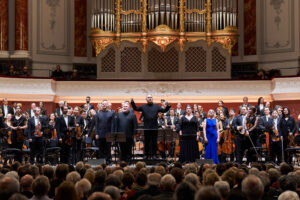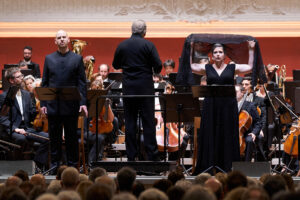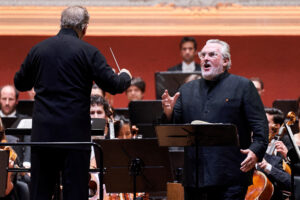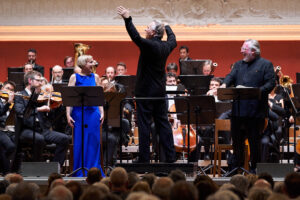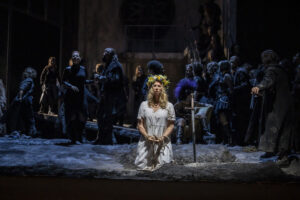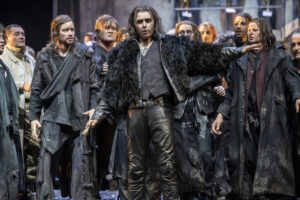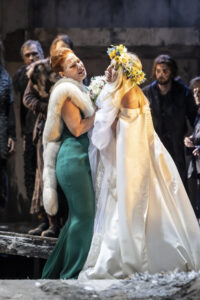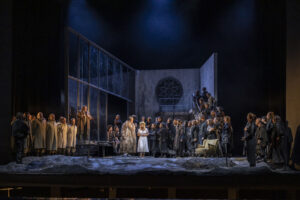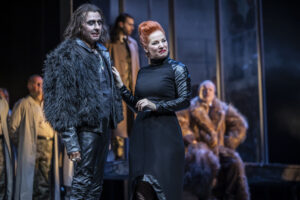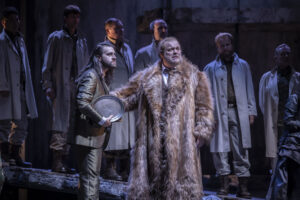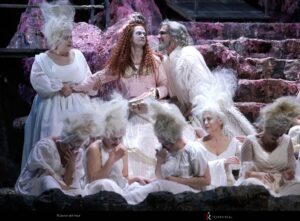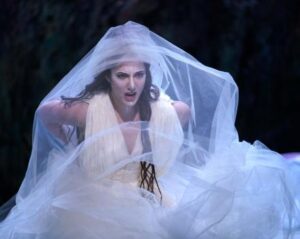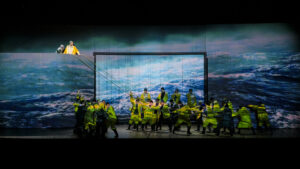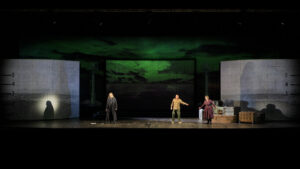Czerwone żagle nad Tagiem
Gdyby Vasco da Gama nie wytyczył drogi morskiej z Europy do Indii, legendarny holenderski kapitan Hendrik Van der Decken nie znalazłby w sobie dość pychy, by zmuszać żeglarzy do walki ze sztormem w rejonie Przylądka Dobrej Nadziei. W 1487 roku załoga floty pod wodzą Bartolomeu Diasa odmówiła dalszej podróży na wschód, a skalisty cypel zyskał miano Przylądka Burz. Król Portugalii Jan II, zwany Księciem Doskonałym, postanowił jednak odwrócić złą passę odkrywców. Wysunięty w ocean fragment lądu zyskał nową nazwę cabo da Boa Esperança. Jak się okazało, król miał rację. Pierwsza wyprawa Vasco da Gamy, sfinansowana już przez następnego władcę, Manuela I Szczęśliwego, przekroczyła newralgiczny punkt 22 listopada 1497 roku i kilka tygodni później wypłynęła na wody Oceanu Indyjskiego. Wróciła do Lizbony we wrześniu następnego roku. Kapitan, choć stracił przeszło dwie trzecie załogi i musiał spalić jeden ze statków, żeby powstrzymać szerzącą się na pokładzie zarazę, doczekał się hojnej zapłaty za swój trud. Król Manuel nadał mu tytuł admirała, a w akcie dziękczynienia za otwarcie dostępu do indyjskich bogactw nakazał budowę klasztoru Hieronimitów w sąsiedztwie portu Restelo.
To właśnie stąd ruszyły statki Vasco da Gamy. W tutejszym kościółku, na którego miejscu stanął później klasztor z nową świątynią Santa Maria de Belém, żeglarze modlili się o powodzenie przełomowej wyprawy. To z woli króla Manuela, po kolejnych sukcesach odkrywcy, wzniesiono w korycie Tagu słynną Torre de Belém, punkt orientacyjny dla wracających do portu śmiałków i symbol potęgi morskiej Portugalii. To tutaj stanął potężny gmach Centro Cultural de Belém, wybudowany z okazji prezydencji kraju w Radzie Unii Europejskiej w 1992 roku, oprócz pomieszczeń konferencyjnych i wystawowych obejmujący dwie sale koncertowe z pełnym zapleczem. Ta większa, z widownią na prawie półtora tysiąca miejsc, gości między innymi przedstawienia operowe, których ze względu na rozbudowany aparat wykonawczy nie da się zorganizować w zabytkowym Teatro Nacional de São Carlos.
Zanim Van der Decken dopuścił się bluźnierstwa wśród sztormu u brzegów Afryki i ściągnął klątwę na swój statek, musiał po drodze opłynąć Portugalię – może nawet zawinął do portu na przedmieściach Lizbony, gdzie zaczęła się epoka wielkich odkryć. Nie mogłam opędzić się od tej myśli, jadąc na spektakl Latającego Holendra kilkaset metrów od kotwicowiska, na którym stały trójmasztowce Vasco da Gamy, i drugie tyle od sarkofagu kryjącego jego doczesne szczątki. Do Portugalii wybrałam się jednak przede wszystkim ze względu na osobistą fascynację brytyjskim podejściem do twórczości Wagnera. Chciałam skonfrontować swoje wrażenia z interpretacji Negusa, Farnesa i Eldera z tym, co w Holendrze zaproponuje Graeme Jenkins, uczeń między innymi Normana Del Mara, dyrygenta, który zaczynał karierę jako waltornista, z czasem zaś zasłynął z rzetelnych i bardzo wnikliwych ujęć muzyki Ryszarda Straussa. Byłam też ciekawa spóźnionego debiutu Petera Wedda w partii Eryka, ponownego spotkania z Dalandem w osobie Petera Rose’a, i last but not least – żywego kontaktu z charyzmatycznym Islandczykiem Tómasem Tómassonem w roli Holendra, którego do tej pory słyszałam na scenie tylko raz, w tak fatalnym przedstawieniu Tristana, że nawet jego Kurwenal nie zrobił na mnie większego wrażenia.
Scena zbiorowa z I aktu. Fot. António Pedro Ferreira
Jenkins jest niezwykle wszechstronnym dyrygentem operowym, doświadczonym także w repertuarze Wagnerowskim. Przez blisko dwie dekady związany z Dallas Opera, przygotował w niej ponad pięćdziesiąt premier, w tym Pierścień Nibelunga, którego realizację rozpoczął w wieku niespełna czterdziestu lat. Partyturę Holendra ma w małym palcu. Warto przypomnieć, że otworzył nim sezon wiedeńskiej Staatsoper w 2014 roku: spektakl, który prowadził wówczas w zastępstwie za Yannicka Nézet-Séguina, przeszedł do historii ze względu na fenomenalną kreację Bryna Terfla w roli udręczonego żeglarza-tułacza. Sądząc jednak z tego, co usłyszałam w Lizbonie, coś mu w tym dziele umyka, wodzi na manowce, wikła w labirynt intrygujących faktur i dopieszczonych detali, z którego nie wyłania się przekonujący obraz całości. Trzeba przyznać, że Jenkins prowadził muzyków stosunkowo lekką ręką, w spokojnych, nieźle wyważonych tempach. Wiedział, jak osadzić poszczególne partie w logicznie skonstruowanych strukturach brzmieniowych, jak wyeksponować znaczące motywy, dać przestrzeń śpiewakom. Nie potrafił wszakże podtrzymać pulsu narracji muzycznej, który w prawdziwie mistrzowskich ujęciach tej opery przypomina rytm skołatanego serca: trzepoce, omdlewa, nagle się urywa, by za chwilę znów ruszyć naprzód aż do utraty tchu. W jego gładkim, pieczołowicie oszlifowanym Holendrze zabrakło kontrastów. Nie dało się odczuć ani posępnej grozy nieśmiertelności, ani naiwnego wdzięku odkupienia. Wszystko toczyło się jakby za mgłą, w szarawym półmroku, niwelującym nie tylko czerń oceanu, ale i blask w oczach Senty.
Tómas Tómasson (Holender) i Gabriela Scherer (Senta). Fot. António Pedro Ferreira
Może zresztą jestem niesprawiedliwa, może zdystansowana interpretacja Jenkinsa po prostu nie trafia w moją wrażliwość, kłóci się z moim wyobrażeniem o prawdziwych walorach tej ultraromantycznej opery. Orquestra Sinfónica Portuguesa pod jego batutą grała z wyraźnym zapałem, choć – paradoksalnie – więcej liryzmu i subtelnych odcieni agogicznych udało mu się wyegzekwować w grupie instrumentów dętych niż w mniej czułym na gest dyrygenta kwintecie. Znakomicie sprawiły się połączone chóry: zespół Teatro Nacional pod kierunkiem Giampaola Vesselli i przygotowany przez Pedra Teixierę Coro Ricercare. Narrację nieśli jednak przede wszystkim soliści. Przyznam, że Peter Rose – wciąż w znakomitej formie wokalnej – staje się moim ulubionym Dalandem, wzruszająco ludzkim w swoich słabościach i autentycznej, choć niemądrej miłości do córki. W partiach drugoplanowych świetnie wypadli Maria Luisa de Freitas (Mary) i Marco Alves dos Santos (Sternik), zwłaszcza ten ostatni, obdarzony ładnym, może nie dość otwartym w górnym rejestrze tenorem, z którego pomocą potrafił jednak zarysować wyrazistą sylwetkę młodego, trochę zagubionego w świecie szczurów lądowych marynarza. Peter Wedd, śpiewający głosem jaśniejszym niż zwykle, niemniej wciąż doskonale podpartym i niewątpliwie bohaterskim, wykreował Eryka-brutala, niedojrzałego do uczuć mężczyznę-chłopca, balansującego na cienkiej granicy między agresją, manipulacją a uległością. Chwilami było to naprawdę wstrząsające. Gabriela Scherer, dysponująca niezwykle urodziwym, mięsistym i barwnym sopranem, prowadzonym lekko i z dużym wyczuciem frazy, chwilami czuła się skrępowana w roli biernej Senty, co skutkowało drobnymi wpadkami intonacyjnymi i trochę matowym dźwiękiem w średnicy. Gwiazdą wieczoru – zgodnie z oczekiwaniami – okazał się Tómas Tómasson, choć nie ukrywam, że w partii Holendra wolałabym go usłyszeć kilka lat wcześniej. Jego „czarny”, rasowy baryton dramatyczny zdradza już pewne oznaki zmęczenia, wciąż jednak trafia w samo serce słuchacza. To głos potężny, a zarazem subtelny, idealnie wyrównany w rejestrach, mądrze wyprowadzony w górę z fachu basowego, nie zaś na odwrót, jak w przypadku większości współczesnych bas-barytonów wagnerowskich. Poza tym Tómasson ma świetne warunki fizyczne do tej roli i jest bardzo przekonujący aktorsko. W Lizbonie stworzył postać jak z filmu Murnaua, mroczną, ekscytującą, obdarzoną wielką siłą ekspresji.
Scena z III aktu. Fot. António Pedro Ferreira
W tegorocznym programie Teatro Nacional de São Carlos znalazły się tylko dwa przedstawienia Latającego Holendra, w inscenizacji młodego reżysera Maksa Hoehna, który pierwsze szlify zdobywał jako asystent Grahama Vicka i Davida Pountneya. Kilka miesięcy temu utyskiwałam na koncepcję Paula Currana, zrealizowaną w równie niewdzięcznych warunkach bolońskiego EuropAuditorium. Chyba muszę zwrócić mu honor. Dysponując ograniczonym budżetem, lepiej nie mieć pomysłów, niż mieć tych pomysłów zbyt wiele. Hoehn zaśmiecił przestrzeń mnóstwem tandetnych rekwizytów, równie tandetnie oświetlonych i uzupełnionych infantylnymi wręcz projekcjami (scenografia i reżyseria świateł Giuseppe di Iorio, kostiumy Rafaela Mapril, projekcje Amber Cooper-Davies). Całość sprawiała wrażenie szkolnego teatrzyku, zrealizowanego siłami skłóconych między sobą uczniów. Zamiast statku Dalanda – przeskalowana łódeczka z papieru. Zamiast sztormu – meksykańska fala z krzeseł. Skoro Eryk jest myśliwym, to niech biega po scenie z przewieszoną przez ramię dubeltówką. Skoro Senta ma odejść z Holendrem, to niech czeka na niego w porcie z tekturową walizką. Tylko dwa razy zapachniało prawdziwym teatrem: kiedy pojawienie się widmowego galeonu zasugerowano nagłym zrzuceniem z nadscenia podświetlonego na czerwono żagla, i w scenie snu Eryka, który snuł swój monolog ze zmartwiałą twarzą, siedząc nieruchomo za stołem. Publiczność przyjęła inscenizację chłodno, nie kryła jednak entuzjazmu dla wykonawców. I słusznie, bo lizbońskiego Holendra wystawiono w doborowej obsadzie, a z koncepcją dyrygenta dało się przynajmniej dyskutować.
Ja też przyłączyłam się do owacji. Latający Holender omijał Lizbonę przez blisko czterdzieści lat. Niech ten spektakl będzie znakiem dobrej nadziei. Tym razem nie udało się opłynąć Przylądka Burz, ale flota wróciła do portu bezpiecznie. Czekamy na Vasco da Gamę.

